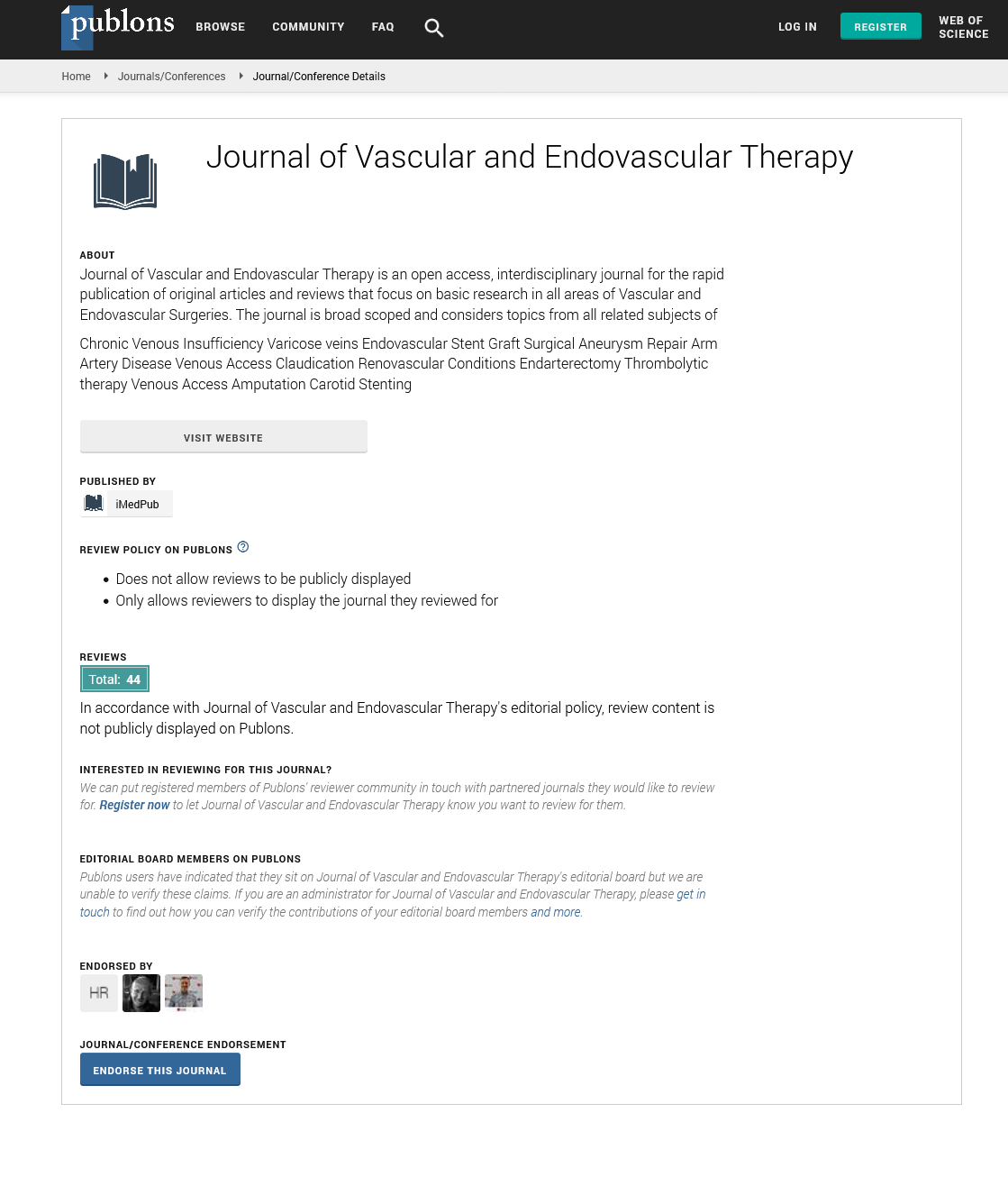A comparison of major amputation rates and outcomes for Indigenous and non-Indigenous Australians in a major tertiary hospital
3rd Edition of World Congress & Exhibition on Vascular Surgery
May 24-25, 2018 London, UK
Tejas P Singh, Samantha Peden, Ammarah Tahir, Vikram Iyer, Ramesh Velu, Joseph V Moxon, Yvonne Cadet James and Jonathan Golledge,
Queensland Research Centre for Peripheral Vascular Disease - JCU, Australia Townsville Hospital, Australia James Cook University, Australia
ScientificTracks Abstracts: J Vasc Endovasc Therapy
DOI: 10.21767/2573-4482-C1-002
Abstract
Aim: Indigenous Australians are at high risk of developing diabetes-related foot complications requiring major lower limb amputations. The aim of this study was to assess the incidence and outcome for Indigenous Australians and non-Indigenous Australians undergoing major amputations (MA) at the main tertiary hospital in North Queensland, Australia over a 16-year period. Methods: This was a retrospective study assessing all patients who underwent a MA at The Townsville Hospital between 2000 and 2015. Clinical characteristics were compared using Pearson’s χ2 test and Mann Whitney U test. MA rates (per 100,000) were calculated using the census data as the standard population. Kaplan Meier survival analysis and Cox proportional hazard analysis compared the incidence of all-cause mortality among both groups. Results: A total of 374 MA occurred between 2000 and 2015. Seventy MA occurred in Indigenous Australians and 304 occurred in non-Indigenous Australians. Indigenous patients were younger (p<0.005), more likely to be females (p=0.002), have diabetes (p<0.005), end-stage renal failure (p=0.003), and were more likely to die during follow-up (p=0.028). Overall rates of MA in Indigenous and non-Indigenous patients with diabetes were 291.9 and 70.1 per 100,000 respectively. MA rates increased in Indigenous (~15%) and non-Indigenous patients (~50%) with diabetes between 2000-2007 and 2008-2015 (p=0.505). Indigenous patients were at a ~2-fold greater risk of all-cause mortality (p=0.027) compared to non-Indigenous patients. This association was lost in the multivariate analysis (HR 1.24 [0.82-1.89], p=0.314). Conclusion: The burden of MA has increased in North Queensland and is greater in Indigenous Australians.
Recent Publications 1. Singh T P, Morris D R, Smith S, Moxon J V and Golledge J (2017) Systematic review and meta-analysis of the association between C-reactive protein and major cardiovascular events in patients with peripheral artery disease. European Journal of Vascular and Endovascular Surgery 54(2):220-33. 2. Morris D, Singh T, Moxon J, Smith A, Stewart F, Jones R, et al. (2017) Assessment and validation of a novel angiographic scoring system for peripheral artery disease. British Journal of Surgery 104(5):544-54. 3. Singh T P, Vangaveti V N, Kennedy R L and Malabu U H (2016) Role of telehealth in diabetic foot ulcer management - a systematic review. Australian Journal of Rural Health 24(4):224. 4. Nair J J and Singh T P (2017) Sjogren’s syndrome: Review of the aetiology, pathophysiology & potential therapeutic interventions. Journal of Clinical and Experimental Dentistry 9(4):e584-e589. 5. Singh T P, Vangaveti V N and Malabu U H (2015) Dipeptidyl peptidase-4 inhibitors and their potential role in the management of atherosclerosis - a review. Diabetes & Metabolic Syndrome: Clinical Research & Reviews 9(4):223-9
Biography
Tejas P Singh is a Resident Medical Officer at the Vascular Surgery Department of the Townsville Hospital and a Junior Research Fellow at the Queensland Centre for Peripheral Vascular Disease
Email:tejas.singh@my.jcu.edu.au
Google Scholar citation report
Citations : 177
Journal of Vascular and Endovascular Therapy received 177 citations as per Google Scholar report
Journal of Vascular and Endovascular Therapy peer review process verified at publons
Abstracted/Indexed in
- Google Scholar
- Publons
- Geneva Foundation for Medical Education and Research
- Secret Search Engine Labs
Open Access Journals
- Aquaculture & Veterinary Science
- Chemistry & Chemical Sciences
- Clinical Sciences
- Engineering
- General Science
- Genetics & Molecular Biology
- Health Care & Nursing
- Immunology & Microbiology
- Materials Science
- Mathematics & Physics
- Medical Sciences
- Neurology & Psychiatry
- Oncology & Cancer Science
- Pharmaceutical Sciences


